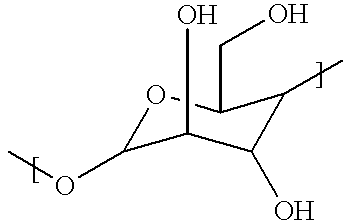Compact storage and shipping system for glyphosate herbicide
a technology of glyphosate and storage and shipping system, which is applied in the field of compact storage and shipping system for glyphosate herbicide, can solve the problems of increasing the cost ultimately borne by the farm operation, incurring warehousing costs, and numerous logistical problems in the industry
- Summary
- Abstract
- Description
- Claims
- Application Information
AI Technical Summary
Benefits of technology
Problems solved by technology
Method used
Image
Examples
example 1
[0131] In a 1 liter glass vessel with magnetic stirrer are mixed 479.2 g glyphosate acid, technical grade (assay 96%), 166.0 g monoethanolamine and water to 1000 g. Reaction of the glyphosate acid with the monoethanolamine to form the MEA salt of glyphosate is exothermic. The reaction mixture is allowed to cool to room temperature. The specific gravity (20 / 15.6.degree. C.) of the resulting 62.6% by weight aqueous solution of glyphosate MEA salt, containing 46.0% by weight glyphosate a.e., is measured and found to be 1.32. The density of the solution at 25.degree. C. is 1.31 g / l, thus the volume at 25.degree. C. of 1000 g of this solution is 763 ml and the weight / volume concentration of glyphosate is 602 g a.e. / l.
[0132] For comparison, a 62.1% by weight aqueous solution of glyphosate IPA salt, also containing 46.0% by weight glyphosate a.e., is found to have a specific gravity of 1.24. The density of the solution at 25.degree. C. is 1.23 g / l, thus the volume at 25.degree. C. of 1000 ...
example 2
[0134] A series of aqueous solutions of glyphosate MEA salt, having a range of glyphosate a.e. concentrations, are prepared by the general procedure of Example 1. Specific gravity is measured for each solution.
[0135] Results are shown in FIG. 1, by comparison with solutions of glyphosate IPA salt. At all concentrations, specific gravity of the MEA salt solution is found to be significantly higher than that of the corresponding IPA salt solution.
[0136] Glyphosate MEA salt solution of this Example having a glyphosate concentration of 29.9% a.e. by weight is added in sufficient volume to a 10 liter jug normally used commercially for storage and shipping of glyphosate IPA salt solution at 30.2%, to substantially fill that container. The resulting filled container is a storage and shipping system in accordance with the present invention. By virtue of the fact that the 29.9% a.e. by weight glyphosate MEA salt solution has a specific gravity of 1.1991, which is 3.7% higher than that of the...
example 3
[0137] The 46% a.e. by weight aqueous glyphosate MEA salt solution of Example 1 is reprepared in larger volume.
[0138] A cylindrical HDPE drum is fabricated identical to a 100 liter drum used commercially for storage and shipping of 46% a.e. by weight glyphosate IPA salt solution, except that the diameter of the drum is 2.55% smaller than that of the commercial drum, so that its cross-sectional area is 6.5% less. The capacity of the smaller drum is 93.5 liters. This 93.5 liter drum is substantially filled with the glyphosate MEA salt solution to form a storage and shipping system of the present invention. The net weight of the filled 93.5 liter drum of the invention is equal to that of a 100 liter drum filled with 46% a.e. by weight glyphosate IPA salt solution. However, the smaller diameter of the 93.5 liter drum enables a larger number of such drums to be stored in a warehouse of given dimensions, or shipped for example in a freight compartment of given dimensions in a seagoing ves...
PUM
 Login to View More
Login to View More Abstract
Description
Claims
Application Information
 Login to View More
Login to View More - R&D
- Intellectual Property
- Life Sciences
- Materials
- Tech Scout
- Unparalleled Data Quality
- Higher Quality Content
- 60% Fewer Hallucinations
Browse by: Latest US Patents, China's latest patents, Technical Efficacy Thesaurus, Application Domain, Technology Topic, Popular Technical Reports.
© 2025 PatSnap. All rights reserved.Legal|Privacy policy|Modern Slavery Act Transparency Statement|Sitemap|About US| Contact US: help@patsnap.com



